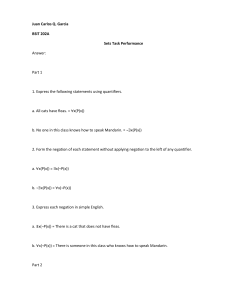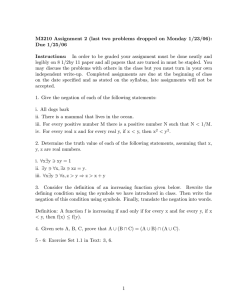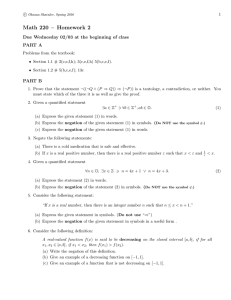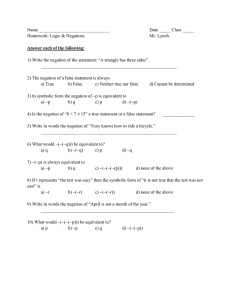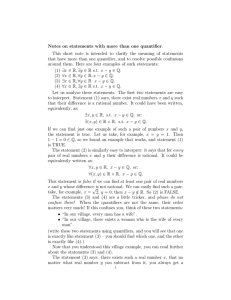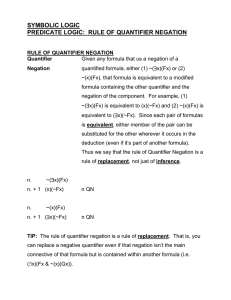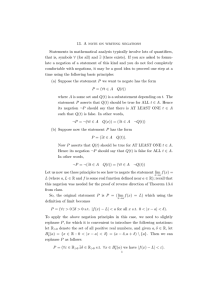Section 1.5
advertisement
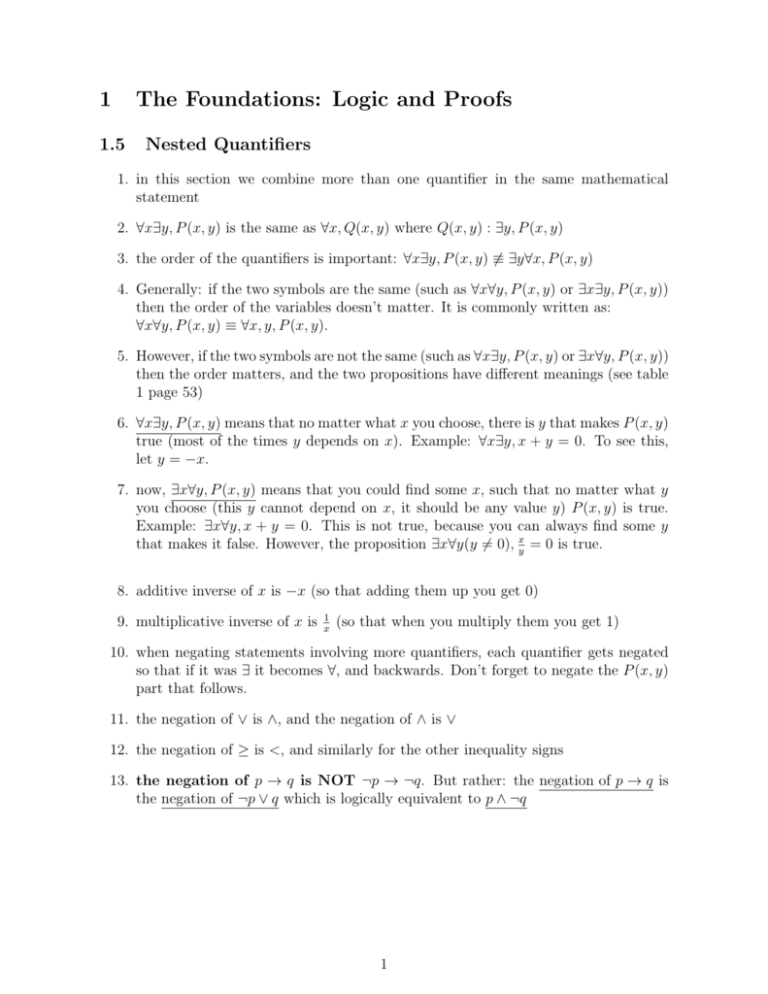
1 The Foundations: Logic and Proofs 1.5 Nested Quantifiers 1. in this section we combine more than one quantifier in the same mathematical statement 2. ∀x∃y, P (x, y) is the same as ∀x, Q(x, y) where Q(x, y) : ∃y, P (x, y) 3. the order of the quantifiers is important: ∀x∃y, P (x, y) 6≡ ∃y∀x, P (x, y) 4. Generally: if the two symbols are the same (such as ∀x∀y, P (x, y) or ∃x∃y, P (x, y)) then the order of the variables doesn’t matter. It is commonly written as: ∀x∀y, P (x, y) ≡ ∀x, y, P (x, y). 5. However, if the two symbols are not the same (such as ∀x∃y, P (x, y) or ∃x∀y, P (x, y)) then the order matters, and the two propositions have different meanings (see table 1 page 53) 6. ∀x∃y, P (x, y) means that no matter what x you choose, there is y that makes P (x, y) true (most of the times y depends on x). Example: ∀x∃y, x + y = 0. To see this, let y = −x. 7. now, ∃x∀y, P (x, y) means that you could find some x, such that no matter what y you choose (this y cannot depend on x, it should be any value y) P (x, y) is true. Example: ∃x∀y, x + y = 0. This is not true, because you can always find some y that makes it false. However, the proposition ∃x∀y(y 6= 0), xy = 0 is true. 8. additive inverse of x is −x (so that adding them up you get 0) 9. multiplicative inverse of x is 1 x (so that when you multiply them you get 1) 10. when negating statements involving more quantifiers, each quantifier gets negated so that if it was ∃ it becomes ∀, and backwards. Don’t forget to negate the P (x, y) part that follows. 11. the negation of ∨ is ∧, and the negation of ∧ is ∨ 12. the negation of ≥ is <, and similarly for the other inequality signs 13. the negation of p → q is NOT ¬p → ¬q. But rather: the negation of p → q is the negation of ¬p ∨ q which is logically equivalent to p ∧ ¬q 1

